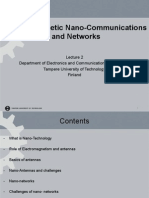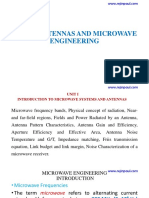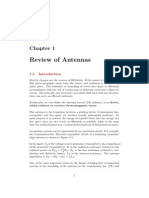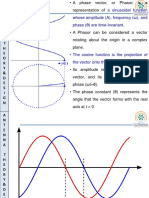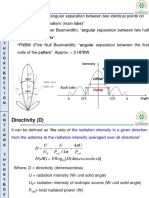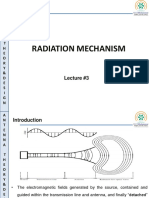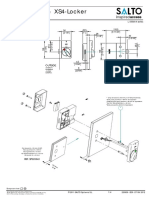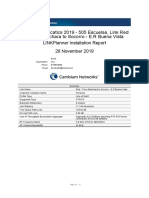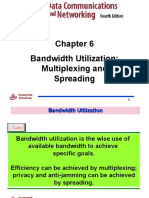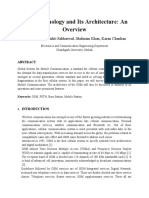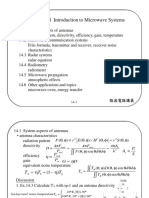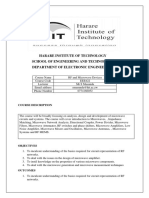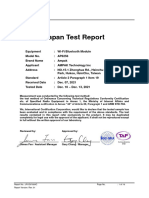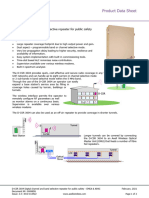0% found this document useful (0 votes)
81 views38 pagesAntennas: An Introduction To Recent Trends in
This document provides an overview of recent trends in antenna technology. It discusses antenna parameters, types of antennas including wire antennas, aperture antennas, array antennas and more. It covers applications in wireless communication, remote sensing, and challenges in developing low cost, compact antennas. Future areas of research include phased arrays, mmWave antennas, massive MIMO and reconfigurable antennas to enable seamless connectivity.
Uploaded by
Meghna PatnaikCopyright
© © All Rights Reserved
We take content rights seriously. If you suspect this is your content, claim it here.
Available Formats
Download as PDF, TXT or read online on Scribd
0% found this document useful (0 votes)
81 views38 pagesAntennas: An Introduction To Recent Trends in
This document provides an overview of recent trends in antenna technology. It discusses antenna parameters, types of antennas including wire antennas, aperture antennas, array antennas and more. It covers applications in wireless communication, remote sensing, and challenges in developing low cost, compact antennas. Future areas of research include phased arrays, mmWave antennas, massive MIMO and reconfigurable antennas to enable seamless connectivity.
Uploaded by
Meghna PatnaikCopyright
© © All Rights Reserved
We take content rights seriously. If you suspect this is your content, claim it here.
Available Formats
Download as PDF, TXT or read online on Scribd
/ 38



